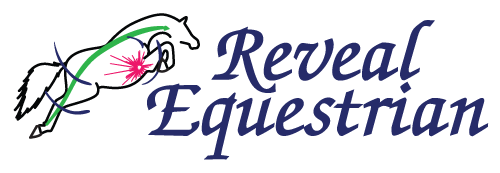Let us talk about guiding your horse while riding. If you are an equestrian enthusiast, you have probably begun looking for tricks to teach your horse and impress family and friends and where to get horse riding lessons in San Juan Capistrano, but careful not to run before you learn to walk! It is important to us that you learn to communicate commands to your horse and avoid accidents by making the horse feel uncomfortable or by having you adopt an insecure position while riding.
Horse Riding Lessons Essentials: Check Your Posture
When you mount a saddle, it is of utmost importance that you remain calm and comfortable. Keep in mind that horses are sensitive to your emotions and will react accordingly. First things first, after you mount the saddle, adopt an appropriate position to ride your horse. When horses are at a standstill, their front legs have to support about 60% of their weight, and you will only add to their discomfort if you’re in an incorrect position.
You will also suffer from adopting the wrong position while riding. After your session, you can begin feeling joint pain in the ankles, hips, and back. If you are not careful, you could also be at risk of serious injury. When you come for horse riding lessons in San Juan Capistrano, try to align your shoulders, hips, heels, and ears. If you can mentally draw a line through all of them, you are basically in a position that would allow you to stand on your own two feet if there weren’t a horse below you.
We will gladly help you correct any problems with your position if you decide to take horse riding lessons in San Juan Capistrano with us, you only need to worry about enjoying the process and listening to our advice. Once you are sitting upright, with your shoulders squared, and confidently gazing over your horse’s head, we can talk about how to hold the reins. There are different ways to guide your horse with the reins, but trust us when we tell you that they all start by holding the reins confidently and with a relaxed grip. When you’re up there, let go of your anxieties, trust your horse, and they will trust you back.
Horse Riding Lessons Pro Tips: How many rein positions are there?
There are different rein positions to guide your horse. Direct, indirect, and supporting reins are all different methods to obtain the same, and they all have their strengths. We will briefly touch on all of them to give you an overview of what they mean in practical terms and to provide you with an introduction to properly guiding your horse. You should note that there are several factors in how you communicate commands to your horse, we mentioned your posture, and we will talk about the positions of the reins. Other factors include your balance, the bridle used, and more.
When you hold the reins, keep in mind two details: first, try to keep a relaxed grip; second, don’t keep your hands too far apart. We know it’s hard to stay calm when someone is constantly reminding you, but if you keep taking horse riding lessons in San Juan Capistrano and learning to trust your horse, it will become second nature. A relaxed grip of the reins helps reassure your horse when you are riding them. If you hold your hands too far apart, you will create tension, and it will be harder to cue your horse into action. Keeping your hands close to each other will also make transitioning to one-handed riding easier.
The direct reins
You can try communicating commands to your horse in many different ways. You can initiate movement with a direct rein, meaning that you gently pull on the reins from the side where you want to go. If you wanted to go to the right, you would slightly move the reins out to the right. Being careful won’t mess with your horse’s balance and will correctly communicate your commands to your horse. Be careful to avoid leading movements where you have to lean forward and mess with the balance of your horse.
Try indirect reins
Taking horse riding lessons in San Juan Capistrano will also let you practice an indirect rein, which is slightly different. To tell your horse where you want to go, you would no longer pull from the reins of the same side, but rather lean the opposite rein on the horse’s neck. That is why indirect reining is also called neck-reining. Neck-reining makes it possible for the rider to lead with just one hand, leaving your other hand free to perform any other task. If your horse were to stir up, you could use your free hand to hold on to the saddle without completely losing control over your horse.
Supporting reins
Finally, a supporting rein can also be adopted, and it works with direct or indirect reins. It can be tricky, so remember not to hold the supporting reins so high that it only ends up confusing your horse. The direct or indirect rein tells your horse where you want to go, and the supporting reins can help stabilize the horse and move desired quarters of their bodies. To better learn any of these techniques, you can ask our team for tips when taking horse riding lessons in San Juan Capistrano.
As you practice more and gain confidence with your horse, you will enjoy the entire experience, develop a life-long bond with your horse, and discover a whole new aspect of animal companionship. We are excited to join you in this experience, so saddle up and give us a call. We will be waiting here to help you at Reveal Equestrian.




